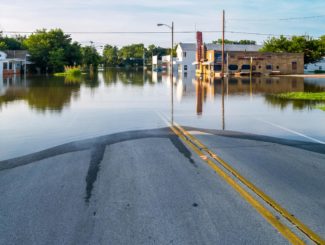By Andrew Plowman, Director of Transportation Design, WSB
Exploring the why behind the twists and turns of road design.
Throughout the COVID-19 era, many Americans have opted out of air travel and are instead packing up their cars and hitting the road for an old-fashioned road trip. A survey conducted by Farmers Insurance found that more than 60% of people are planning to travel by car or RV over the next few months. But as we weave and wind our way through the mountains or travel over the hilly plains, our minds can wander into the why behind the infrastructure that’s bringing us to our destination. We ask, why do roads curve?
There may seem like there is no rhyme or reason to the sharp curves or slight turns along interstates or highways, but there are many reasons roadways curve.
Right of Way
If you’re a rancher, you certainly wouldn’t want a highway slicing down the center of your land. In many cases, Right of Way causes a road to curve around a piece of property rather than through.
Subgrade Conditions
The subgrade is the existing soil located below the pavement and aggregate layer of the roadway. At times, the existing subgrade is made up of organic material or clays that will continue to settle. As the roadway settles it can crack causing damage over time. Rather than dig very deep to remove this material, a roadway alignment may curve out of the way to miss the bad soil conditions.
Profile Considerations
Profile considerations become increasingly important in states where roads need to climb to different elevations. To maintain a grade that isn’t too steep, a road will curve from Point A to Point B to gain distance which flattens the slope.
There are many reasons a road may curve that extend beyond this list. The technical aspects of roadway design are vast. As you make your way to your next destination, see if you can spot the reason a road may curve.

Andrew is a transportation project manager and lead design engineer with over 17 years of experience who has designed more than 80 roundabouts. He is involved in all aspects of roundabout design, including geometrics, traffic operations, staging, and adhering to ADA standards. He has educated communities on the benefits of roundabouts and their safety for managing traffic. Andrew has also shared his professional knowledge nationally at international roundabout conferences.
[email protected] | 763.287.7149

